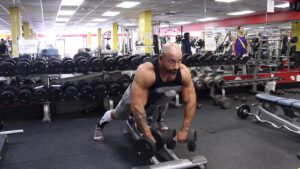Learn more on how the body absorbs and uses medicine: http://www.merckmanuals.com/home/drugs/administration-and-kinetics-of-drugs/drug-absorption How rapidly drugs are absorbed into the body depends on factors such as the speed of the gastrointestinal tract, how acidic it is, and whether the drug is designed to be absorbed slowly (called slow- or sustained-release preparations). Drugs come in tablets, capsules, skin (transdermal) patches, suppositories, and liquids (solutions). Drugs are transformed (metabolized) in the body by enzymes such as those in the liver or kidneys. Drugs that are inactive when taken, but become active after being metabolized, are called pro-drugs. Drugs are eliminated from the body in the urine (for example, if they are soluble in water or after being metabolized) or feces. About The Merck Manuals: First published in 1899 as a small reference book for physicians and pharmacists, The Merck Manual grew in size and scope to become one of the world’s most widely used comprehensive medical resources for professionals and consumers. As The Manual evolved, it continually expanded the reach and depth of its offerings to reflect the mission of providing the best medical information to a wide cross-section of users, including medical professionals and students, veterinarians and veterinary students, and consumers. • Merck Manual Consumer Version: http://www.MerckManuals.com/Home • Facebook for Consumers: http://www.Facebook.com/MerckManualHomeUS • Twitter for Consumers: http://www.Twitter.com/MerckManualHome

How the Body Absorbs and Uses Medicine | Merck Manual Consumer Version
- Post author:
- Post published:May 25, 2021
- Post comments:0 Comments
You Might Also Like

chest/back pullover pecs and lats @ryan_spiteri gym beaston

Clomid: How Long is Too Long?

Single Arm Lying Tricep Extension

How To: Dumbbell Tricep Press

Life at Endurance: Our Culture
![Read more about the article Transdermal Route of Administration [Revised]](https://videos.drmaheshkumar.com/wp-content/uploads/2021/05/Transdermal-Route-of-Administration-Revised-300x169.jpg)
Transdermal Route of Administration [Revised]

Squat-5

Cure Cirrhosis With This Recipe – Homeveda Shorts

WHICH BODY TYPE ARE YOU? How to Train & Eat for YOUR body type?

Base Cream Video – 4

Pharmacist Meaning

Vitamin Supplements Worth Taking

Bone Formation: Fetus to Adult

Thyroid Animation

What is Jaundice?Causes, Signs and symptoms, Diagnosis and treatment

How To Check The Blood Flow In Leg? – Manipal Hospital

Community Psychology Video – 2

5 Types of Belly Fat And What to Do About It

7 Proven Fat Burning Foods

8th Month Pregnancy Diet |Which Foods to Eat When You’re Pregnant|List for 8th Month Pregnancy Diet

How to do Cable Bent Over Triceps Extensions? #91

Testosterone & Androgenic Effects Video – 4

What is an Abscess? How is it Treated?

Incline Lying Triceps Extension

Rear delt combo TEAM ON

Diabetes Meaning

Bodybuilding Nutrition, Diet Recipes & Workout – 20

Lactation Meaning

Brain Stroke, Types of, Causes, Pathology, Symptoms, Treatment and Prevention, Animation.

Dumbbell Flat Chest Bench Press | Chest Exercise #1 | Fitness With Sangram Chougule

Proton pump inhibitors

Shrugs-10

Oncology Video – 2

What To Eat Before & After A Gym Workout

Biological Psychiatry Video – 4

What should one have during severe Diarrhea? – Ms. Sushma Jaiswal

Skeletal system | Human skeletal system | Skeletal system function | The skeletal system

How to Lose Arm Fat – Get rid of Flabby Arms in 1 WEEK, Easy exercise to reduce arm fat

BUILD A BIGGER CHEST – How To Bench Press With Your Pecs

Vitamins Minerals For Health Video – 2

FOODS THAT LOWER BLOOD PRESSURE CAN CURE HIGH BLOOD PRESSURE

